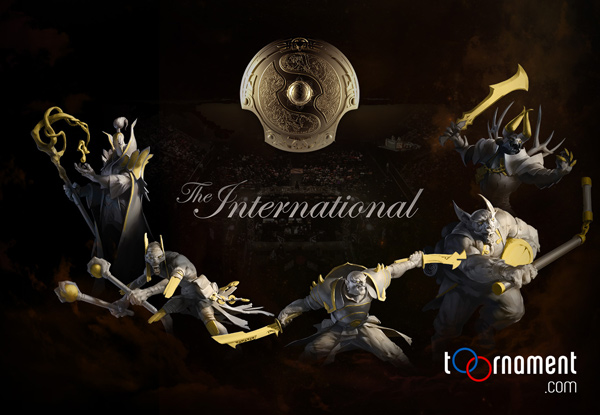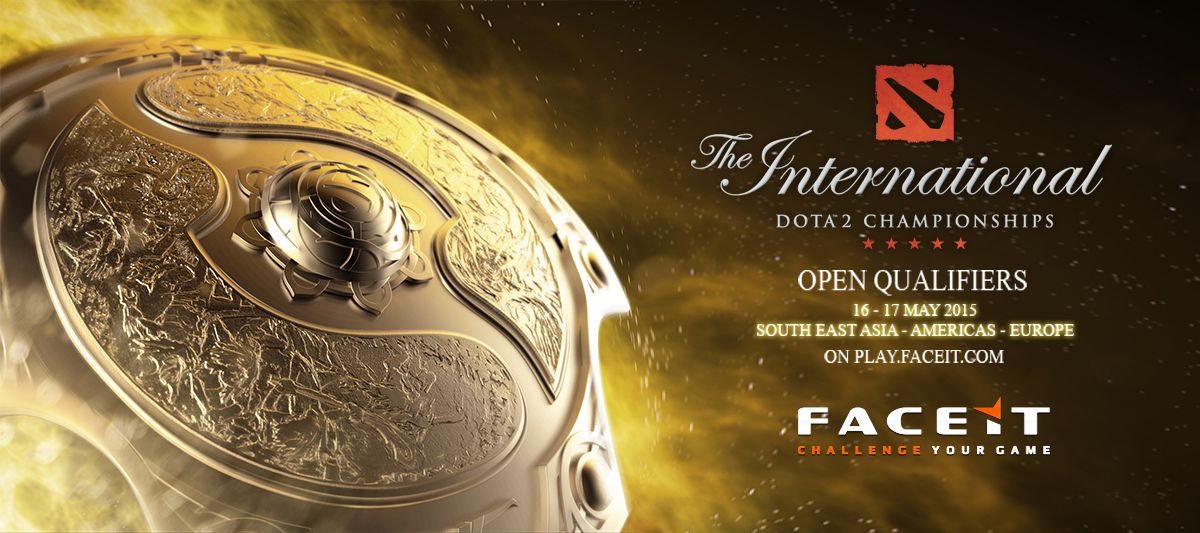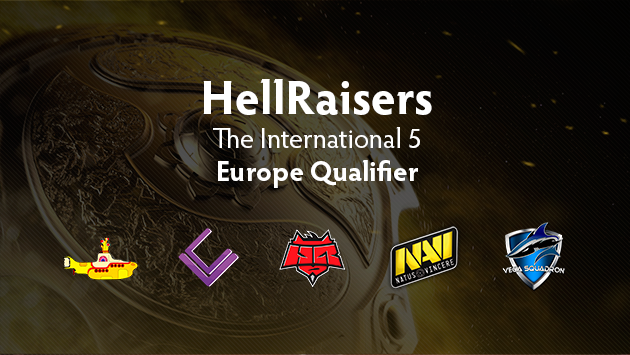As The International 5 is underway, let’s talk about its complex structure and the way it handles performances, elimination and other matters.
Let’s be honest: last year International was a mess to follow: regional qualifiers, last chance tournament, round robin, double playoff, main bracket, all intricated with one another.
For the 5th iteration of its grand tournament, Valve made things simpler, but retained the multiple phases format. Here’s our break down on these choices:
Open Qualifiers (NA, EU, CN, SEA)

- Up to 1024 teams
- Single Elimination bracket
- Match format: Best of One
- The winner is qualified for Main Regional Qualifier
Toornament’s notes: the first step to The International is a brutal welcome. Hundreds of opponents and no misstep allowed!
The combination of “Single elimination bracket” and “Best of 1 Matches” is really steep, but what choice do you have, when thousands of competitors around the world want and can take part in it?
This format is very time efficient, but should never be picked for any advanced stage of your competition.
Regional Qualifiers (NA, EU, CN, SEA)

- 10 teams
- Group stage : 2 groups of 5
- Double elimination bracket: Top team of each group enters through the
- Winner bracket, 2nd team enters the Loser bracket
- Match format: Best of 3, except for the Finals in Best of 5
- Winner is qualified for the Wildcard tournament.
Toornament’s Notes: Classic structure. The limited number of participants allow for a double structure format, the classic “Group to Playoff”. This allows a good amount of matches and the right balance of forgiveness when a competitor stumbles.
The only twist here is that your group performance weighs more than usual on the rest of the competition, as the 2nd ranked in the group directly goes to the Loser bracket, instead of entering the Main bracket with a low seed. This method will be used throughout the whole competition.
The Wild Card
- 4 teams
- Double Elimination Bracket
- Match format: Best of 3
- Top 2 teams advance to the Main Event
- Bottom 2 teams are eliminated
Toornament’s notes: A small, quick competition qualifying the two last teams for the Main Event. This phase wasn’t necessary, as the organizer could just have invited 12 teams instead of 14 and qualified the 4 winners of the Regional Qualifiers.
We think it’s a good way to start the Main Event with an appetizer, and a perfect rehearsal for the admin, streaming and casting teams.
Main Event – Group Stage
- 16 teams
- 2 groups of 8
- Round Robin: Everybody plays each other within a group
- Match format: 2 games. 2-0 earns 3 points, 1-1 earns 1 point, 0-2 earns 0 points
- The top 4 teams of each group enter the main Bracket, the Bottom 4 teams of each group enter the Loser Bracket
Toornament’s notes: This is The International specialty: a huge amount of 112 matches being played in the course of 4 days. Still, the largest phase of the competition doesn’t eliminate anyone.
The rankings it produces are purely Seed intended, as everyone will go to the next phase no matter what. Again, Valve leans toward the “top to the winner bracket, bottom to the loser bracket” method.
We thus feel that this phase is very forgiving for everyone and that the organizers want to give as much chances as possible to every participant. We wouldn’t expect less from the most anticipated Esport tournament of the year.
Main Event – Playoff
- 16 teams
- Double Elimination bracket
- Match format: Best of 3, except the Grand Finals using Best of 5 and the Loser Bracket Round 1 using Best of 1
Toornament’s notes: The last phase of The International 5 follows the ever popular Double Elimination Bracket, adding two modifications to the original model: at the very end, the Grand Final is a Best of 5 match, instead of a set of Best of 3 matches, where the competitor coming from the Loser Bracket has to “reset” the Finals by winning a first Best of 3, whereas the competitor from the Winner Bracket just needs one set to win it all.
At the very beginning of the tournament, Valve has left a steep Loser Bracket 1st round for the bottom competitors. This round is played in a Best of 1 match, meaning a swift elimination for 4 of the bottom teams.
We do understand this decision – Group Stage rankings must come with a price, or no teams will be motivated to really perform, or show their strategies and best moves.
Final Wrap Up

The International is really one of a kind. Its much hyped, crowdfunded money prize is the talk of the town, but its competition structure is worth a look. Valve went with a very unique way to treat its competitors, going from brutal phases to more forgiving ones
The fact that all the teams play a lot of matches over an extended period says one thing for us: The International is a massive competition, but also a massive celebration of DOTA 2 as a game, a community and an Esport discipline.
The generous amount of matches reminds us the NBA league, where the fans get plenty of show and exciting moments. The extended length of the competition – 2 weeks from the start of the Wild Card to the Finals of the Main Event – leans toward the World Cup (4 weeks), which gives time for everyone to celebrate.
As a tournament organizer, you should take notes from The International. There are great ideas (we haven’t even talked about All-star matches, 1v1, media days, days off etc.) to keep in mind, but also lessons you should take as a warning. The main one being that The International is a huge event with huge resources. Valve did a good a job to size the need for their phases, but few people and companies can afford the millions of dollars needed.
All in all, always think about your competitors and the audience experience! The right balance between the amount of matches, the timeframe and people’s endurance will be key to your success. Share with us your ideal Tournament structure and in the meantime, let’s enjoy The International 5!